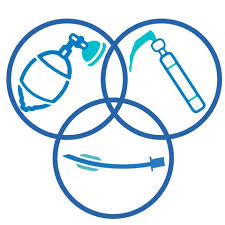Using Virtual Education Apps To Improve Healthcare Education

It may be easy to think that one evaluation method is like another, and use them interchangeably. If you wait until the patient is apneic, then of course you can’t use awake intubation. Once the patient is unconscious, mask ventilation is not performed. Modifications in development of endotracheal tubes to cater the ventilation associated problems, apart from performing its usual function of ventilation, are expected to boost the global endotracheal tube market growth. High success rate of endotracheal tubes is expected to have a positive impact on global endotracheal tube market growth over the forecast period. It is not unexpected, therefore, that intubation with techniques inducing apnea will result in the high complication rates cited above. This circular reasoning fails to acknowledge that the reason for complications with multiple attempts is, in fact, the presence of drug-induced apnea producing hypoxemia. Even in the presence of a non-concerning airway assessment, intubacao, these patients are optimally managed as a difficult airway, utilizing an awake approach. Even so, the arytenoid cartilages are unable to come into contact.
The musculomembranous cords are quite far apart, due partly to tissue loss. Possible Loss of Airway-angioedema, anaphylaxis, neck trauma. We have spent decades honing our skills and successfully representing Pennsylvania families who have suffered an injury or loss due to someone else’s negligence. Who are the key vendors in this market space? Supply/Demand Imbalance-Last reason, not discussed as often in the ED is severe metabolic acidosis or shock where the lungs are causing a huge metabolic demand in a patient without much supply. This is not so much from pressure necrosis as it is from cricoarytenoid joint injury. When the patient tries to produce voice, the vocal cords remain far apart due to injury of the crico-arytenoid joints. Dotted lines show what would be the normal line of posterior vocal cords. As he exhales forcefully, it appears that TA and LCA are normal on the left (right of photo). ROSC patients are less likely to need an advanced airway. With patients in the OR, bag-mask ventilation can usually provide adequate ventilation and oxygenation.
Extremely poor voice in elderly man after severe, life-threatening illness with complications; including an 18-day endotracheal intubation for purposes of ventilation. Injury, typically to the posterior part of both vocal cords, caused by an endotracheal tube1. The MLT on the other hand, when fully advanced down a laryngeal mask, has more than enough clearance distally to the laryngeal mask to be placed safely below the vocal chords as the picture below illustrates. Check the MLT length markings at the lips. This position corresponds to the 20 cm length marking of the MLT lining up with the connector of the laryngeal mask. Inflating the cuff of the MLT is often not even necessary as the fit between the MLT and the laryngeal mask is already pretty snug. However, if a medical education mobile app can bestow even a slight improvement in the intubation performance by the trainees, it means it could have a number of insinuations for patient care as well. All Intensive Care interventions and procedures carry a degree of potential risk even when performed by skilled and experienced staff. The residents who performed intubation in condition A will do a repeat intubation 24 hours later using condition B and vice versa.
In this article, we have chosen a very different topic to discuss about the various thoughts that prevail about dental problems linked to children who are born premature. Furthermore, the cords are stiff and inflexible. During endotracheal tube placement, damage can also occur to the teeth, the soft tissues in the back of the throat, as well as the vocal cords. Intubation in the emergency department is common and can prevent a patient from dying from a reversible condition. But this doesn’t necessarily mean intubation, if the patient has a reversible problem, put them on Non-invasive instead of intubating. The indications for this technique are the same as intubating through a laryngeal mask with the Aintree catheter. Intubation is normally facilitated by using a conventional laryngoscope, flexible fiberoptic bronchoscope or video laryngoscope to identify the glottis the entry to the trachea(wind pipe), though other devices and techniques are available. Pressure is applied directly in midline on the cricoid cartilage, using tips of the thumb and index finger while possibly applying counter-pressure from the back of the neck.
